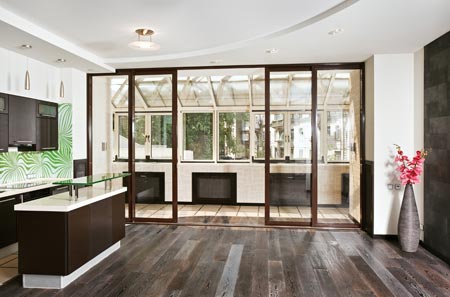Hardwood Floor Installation: When to Repair and When to Replace
When it’s time to change the whole floor, and when just to fix it?
Hardwood floor refinishing can go a long way

A good hardwood floor installation is very durable and can withstand plenty of use and abuse before they require replacement. With proper care and timely repairs, they can easily last 50 years and sometimes even longer. So where exactly lies that fine line between shopping for new hardwood flooring and salvaging the old one?
The first indicator is the scope of the damage. If it’s only your regular tear and wear, then hardwood floor refinishing will definitely do. Keep in mind, though, that this can be done only limited number of times, usually up to ten; it all depends on the type and condition of the wood. If your home sports engineered hardwood flooring, then you can do refinishing once, as the hardwood constitutes only thin topmost layer of the whole board. Another situation when repair makes a viable option is with actual damage limited to a small fraction of the floor.
Hardwood floor installation – when your floor is beyond all repair
However, there are some circumstances when no amount of fixing will help. Flooding is definitely one of them as it results in buckling and warping of hardwood floors. If only part of the floor seems to be affected by water damage, then you may consider repairing it. Remember, though, that it’s not solely an esthetic problem, and even the areas that look good might sustain severe structural damage. Another situation that calls for hardwood floor replacement is mold. If the problem runs too deep and subfloor layer requires removal, then you want to shop for new flooring.
The same goes for termites. Of course, you have to eradicate them, but if they’ve already munched large chunk of your floors, then complete replacement is in place. Of course, each situation is different, so before you decide one way or another, speak with hardwood flooring contractors to determine the proper solution.
